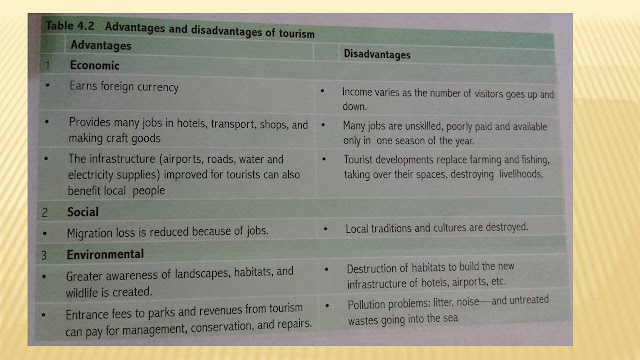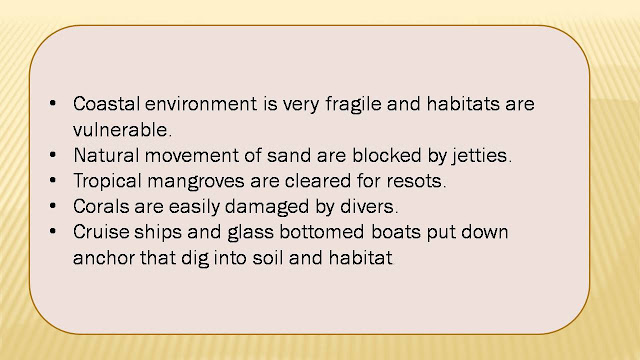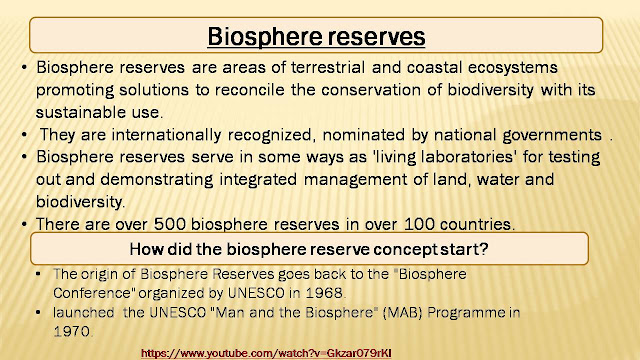Species becoming extinct is a natural process.
ÒIt is part of evolution eg: dinosaurs
ÒThe worry today is the alarming increase in the rate of extinction due to human actions.
ÒHabitat loss is the main reason.
ÒIncrease in population –land used for farming, industries, cities etc.
§They support habitat with high biodiversity.
§They contain useful food resources and raw materials
§They improve soil structure, depth and fertility.
§They prevent or slow down soil erosion.
§They are an important part of the water cycle.
§They are major carbon store or sink.
•These are ecosystems dominated by water.
•They include swamps, marshes, lakes and deltas.
•The water can be stagnant or flowing,
•Fresh or salty.
•They are like kidneys of the landscape.
•They maintain water quality and encourage plant growth.
•They are highly productive ecosystems with rich plants, fish and water birds.
•They absorb and store water.
•Store carbon.
•Rich fisheries, reeds and other building materials,
•Also used for recreation.
The service industries which benefit from tourism include transportation services, such as airlines, cruise ships, and taxicabs; hospitality services, such as accommodations, including hotels and resorts; and entertainment venues, such as amusement parks, casinos, shopping malls, music venues, and theatres.
•Coastal environment is very fragile and habitats are vulnerable.
•Natural movement of sand are blocked by jetties.
•Tropical mangroves are cleared for resots.
•Corals are easily damaged by divers.
•Cruise ships and glass bottomed boats put down anchor that dig into soil and habitat
•Gene banks to preserve a wide range of plants and animals .but it is not perfect because gene banks are vulnerable to disease, human error and accidents.
•The only secure way to preserve the full range of genes for future is to protect plants and animals growing in their natural environment.
•Biosphere reserves are areas of terrestrial and coastal ecosystems promoting solutions to reconcile the conservation of biodiversity with its sustainable use.
• They are internationally recognized, nominated by national governments .
•Biosphere reserves serve in some ways as 'living laboratories' for testing out and demonstrating integrated management of land, water and biodiversity.
•There are over 500 biosphere reserves in over 100 countries.
•The origin of Biosphere Reserves goes back to the "Biosphere Conference" organized by UNESCO in 1968.
•launched the UNESCO "Man and the Biosphere" (MAB) Programme in 1970.
Each biosphere reserve is intended to fulfil 3 basic functions, which are complementary and mutually reinforcing:
- a conservation function - to contribute to the conservation of landscapes, ecosystems, species and genetic variation;
-a development function - to foster economic and human development which is socioculturally and ecologically sustainable;
- a logistic function - to provide support for research, monitoring, education and information exchange related to local, national and global issues of conservation and development.
Biosphere reserves are organized into 3 interrelated zones:
- the core area
- the buffer zone
- the transition area
.



 08:11:00
08:11:00
 StudyyNotes
StudyyNotes















 Posted in:
Posted in: 












0 comments:
Post a Comment